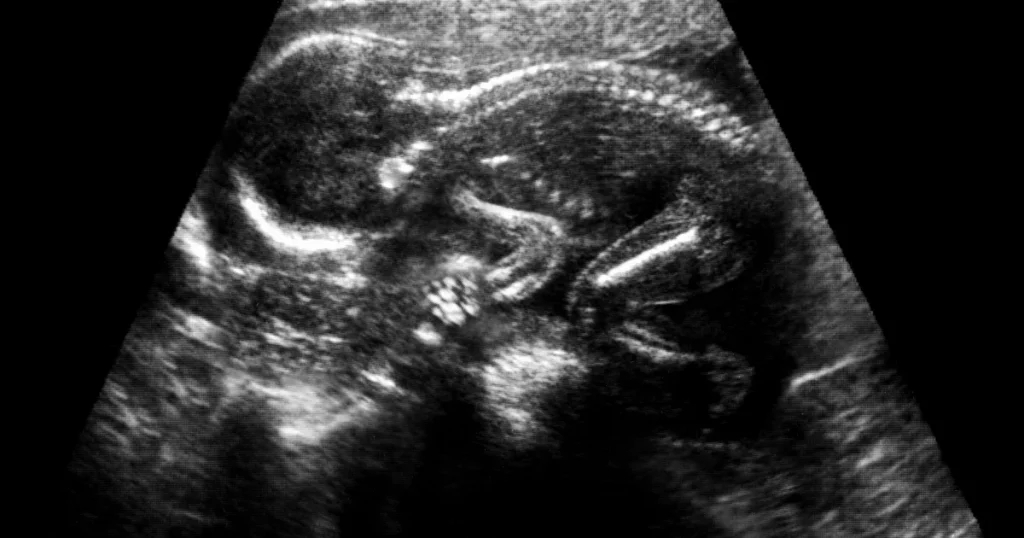Continuous fetal monitoring during labor is a valuable tool for assessing the well-being of both the mother and the baby. While intermittent monitoring is common, there are specific situations where continuous monitoring becomes necessary. This guide aims to provide a clear understanding of the indications for continuous fetal monitoring, ensuring informed decision-making in obstetric care.
Table of Contents: Indications for Continuous Fetal Monitoring
High-Risk Pregnancy
High-risk pregnancies pose unique challenges that demand specialized care and vigilant monitoring. Here are key factors contributing to high-risk pregnancies and the associated considerations:
1. Maternal Medical Conditions:
- Overview: High-risk pregnancies often result from maternal medical conditions that may impact both maternal and fetal well-being.
- Examples: Conditions like diabetes, hypertension, or cardiac issues require careful monitoring to assess their potential effects on the developing baby.
- Significance: Continuous monitoring becomes crucial to promptly identify any signs of distress in the baby and adapt the management plan accordingly.
2. Placental Abnormalities:
- Overview: The placenta plays a vital role in supplying oxygen and nutrients to the fetus. Abnormalities in placental function can jeopardize the baby’s well-being.
- Conditions: Placental insufficiency, placental abruption, or placenta previa are examples of abnormalities that necessitate close monitoring.
- Monitoring Importance: Continuous monitoring helps healthcare providers track changes in fetal heart rate (FHR) and uterine contractions, providing insights into the baby’s response to potential placental issues.
Understanding these indications helps healthcare providers tailor their approach to fetal monitoring, providing personalized care for high-risk pregnancies. Continuous fetal monitoring is a valuable tool in managing high-risk situations, allowing for timely interventions and optimized outcomes.
Also read: A Guide to Reading Fetal Monitor Patterns
Pre-existing Fetal Conditions

When it comes to fetal monitoring, pre-existing fetal conditions are essential considerations that healthcare providers must address. Here’s an overview of key aspects related to pre-existing fetal conditions and their implications:
1. Congenital Anomalies
- Definition: Congenital anomalies are structural or functional abnormalities present in a fetus at birth.
- Monitoring Significance: Fetal monitoring is crucial to assess the impact of congenital anomalies on the baby’s well-being. Continuous surveillance helps healthcare providers adapt care plans to address specific challenges associated with these conditions.
2. Genetic Disorders
- Genetic Variations: Fetal monitoring becomes particularly important when genetic disorders are identified or suspected.
- Diagnostic Tools: Genetic testing, including amniocentesis or chorionic villus sampling, can provide insights into genetic conditions, guiding monitoring strategies.
- Continuous Assessment: Regular monitoring ensures timely identification of any signs of distress or complications associated with genetic disorders.
3. Cardiac Abnormalities
- Pre-existing Heart Conditions: Fetal heart abnormalities may be present before birth, requiring specialized monitoring.
- Monitoring Techniques: Continuous fetal heart rate monitoring and specialized imaging, such as fetal echocardiography, help assess cardiac function and detect anomalies early.
4. Neurological Conditions
- Brain and Nervous System Abnormalities: Certain congenital conditions affect the fetal brain and nervous system.
- Monitoring Focus: Continuous monitoring, including advanced imaging techniques like fetal MRI, assists in evaluating neurological development and identifying any concerns.
5. Intrauterine Growth Restriction (IUGR)
- Definition: IUGR refers to inadequate fetal growth during pregnancy.
- Monitoring for Adequate Nutrition: Fetal monitoring is vital to assess the impact of IUGR on the baby’s nutritional status and plan interventions to support optimal growth.
6. Chromosomal Abnormalities
- Examples: Conditions like Down syndrome involve chromosomal abnormalities.
- Early Detection: Prenatal screening and diagnostic tests help identify chromosomal abnormalities, allowing for continuous monitoring and tailored care.
7. Placental Insufficiency
- Decreased Blood Flow: Some conditions can lead to reduced blood flow through the placenta, affecting fetal well-being.
- Monitoring Blood Flow: Continuous monitoring, including Doppler ultrasound, helps assess placental function and identify signs of insufficiency.
8. Metabolic Disorders
- Conditions: Maternal metabolic disorders, such as diabetes, may impact fetal health.
- Monitoring Glucose Levels: Fetal monitoring includes assessing glucose levels, as well as other parameters, to manage the impact of metabolic disorders on the developing baby.
9. Respiratory Conditions
- Impact on Lung Development: Certain congenital conditions affect fetal lung development.
- Monitoring Respiratory Function: Continuous monitoring helps evaluate the development of the fetal respiratory system and plan for potential respiratory support after birth.
Addressing pre-existing fetal conditions requires a comprehensive and individualized approach. Continuous fetal monitoring, coupled with appropriate diagnostic tools, enables healthcare providers to navigate these complexities, adapt care plans, and ensure the best possible outcomes for both the mother and the baby.
Multiple Gestations
Multiple gestations, referring to pregnancies with more than one fetus, present unique considerations in the context of fetal monitoring. Here’s an overview of key aspects related to multiple gestations and their implications for fetal monitoring:
1. Increased Risk Profile
- Challenges: Multiple gestations inherently come with an elevated risk of complications compared to singleton pregnancies.
- Variability: Risks include preterm birth, low birth weight, and developmental issues, requiring vigilant fetal monitoring throughout pregnancy.
2. Preterm Birth Risk
- Common Concern: Multiple pregnancies often have a higher likelihood of preterm birth.
- Monitoring Significance: Fetal monitoring focuses on detecting early signs of preterm labor, allowing for timely interventions to prolong gestation and improve neonatal outcomes.
3. Growth Discrepancies
- Intrauterine Growth Variability: Monitoring helps identify variations in fetal growth among multiple fetuses.
- Interventions: Differential growth rates may necessitate individualized care plans, with more frequent monitoring for any signs of growth restriction.
4. Twin-Twin Transfusion Syndrome (TTTS)
- Definition: TTTS is a condition specific to identical twin pregnancies where blood flow between fetuses becomes imbalanced.
- Monitoring Techniques: Fetal monitoring, including Doppler ultrasound, helps detect signs of TTTS early, allowing for potential interventions to address the imbalance.
5. Cord Entanglement
- Increased Likelihood: Multiple pregnancies can lead to a higher chance of cord entanglement between the fetuses.
- Monitoring for Complications: Continuous surveillance is essential to identify any signs of compromised blood flow due to cord entanglement.
6. Placental Issues
- Placental Abruption Risk: The risk of placental abruption may be higher in multiple gestations.
- Continuous Monitoring: Fetal monitoring is crucial to promptly identify any signs of placental issues that may impact fetal well-being.
7. Polyhydramnios and Oligohydramnios
- Fluid Imbalance Challenges: Multiple gestations can be associated with imbalances in amniotic fluid levels.
- Monitoring Fluid Levels: Fetal monitoring includes assessing amniotic fluid volume, with deviations requiring further evaluation and potential interventions.
8. Delivery Planning
- Individualized Approaches: Monitoring helps healthcare providers plan for the appropriate timing and mode of delivery for each fetus.
- Interventions: In some cases, interventions such as elective preterm delivery may be considered based on monitoring results and the overall health of the fetuses.
9. Fetal Positioning
- Variability: Monitoring assists in tracking the positions of multiple fetuses.
- Delivery Considerations: Fetal positioning influences the options for delivery, and continuous monitoring helps ensure safe and effective delivery plans.
10. Individualized Care
- Tailored Monitoring: Recognizing the unique needs of each fetus, monitoring plans are tailored to address specific challenges and optimize outcomes for both the mother and each baby.
Multiple gestations demand close and consistent fetal monitoring to address the increased complexities and potential risks associated with these pregnancies. This proactive approach allows healthcare providers to detect issues early, intervene when necessary, and contribute to the well-being of both the mother and each fetus.
History of Uterine Scarring
Uterine scarring refers to the formation of scar tissue in the uterine wall, often as a result of previous uterine surgeries or medical conditions. This scarring can have implications for fetal monitoring during pregnancy. Here’s an exploration of the history of uterine scarring and its impact on the fetal monitoring process:
- Prior Cesarean Sections: Women with a history of cesarean sections may develop scar tissue in the uterine wall.
- Uterine Surgeries: Other uterine surgeries, such as myomectomy (fibroid removal) or procedures to address uterine abnormalities, can contribute to scarring.
- Medical Conditions: Certain medical conditions, like endometriosis or infections, may lead to uterine scarring.
In pregnancies with a history of uterine scarring, meticulous fetal monitoring becomes a cornerstone of care. This proactive approach enables healthcare providers to anticipate, identify, and manage potential complications, contributing to the safety and well-being of both the mother and the developing fetus.
Preterm Labor

Preterm labor, defined as the onset of labor before 37 weeks of gestation, poses unique challenges that necessitate specialized fetal monitoring strategies. Here’s an exploration of how fetal monitoring is approached in the context of preterm labor:
1. Early Warning Signs Monitoring
- Cervical Changes: Fetal monitoring in preterm labor includes assessing changes in the cervix, such as cervical dilation and effacement, to identify early signs of labor onset.
- Contractions Monitoring: Continuous monitoring of uterine contractions helps detect patterns indicative of preterm labor and guides timely interventions.
2. Fetal Heart Rate Assessment
- Baseline Fetal Heart Rate: Monitoring the baseline fetal heart rate is crucial for identifying any deviations that may signal fetal distress.
- Variability Analysis: Variability in the fetal heart rate is closely observed to assess the nervous system’s integrity and responsiveness.
3. Assessment of Amniotic Fluid Levels
- Amniotic Fluid Index (AFI): Preterm labor monitoring involves assessing the AFI through ultrasound to ensure adequate amniotic fluid levels, vital for protecting the developing fetus.
4. Monitoring for Twin Pregnancies
- Twin-Specific Risks: Twin pregnancies are at a higher risk of preterm labor.
- Individualized Monitoring: Fetal monitoring strategies are tailored to address the unique challenges of twin pregnancies, including the increased likelihood of early labor.
5. Preterm Birth Risk Factors
- Identifying Risk Factors: Monitoring aims to identify and manage risk factors associated with preterm birth, such as infections, multiple pregnancies, or a history of preterm labor.
6. Individualized Care Plans
- Tailoring Monitoring Protocols: Fetal monitoring plans are individualized based on the specific circumstances of preterm labor, accounting for maternal and fetal well-being.
- Balancing Interventions: Striking a balance between interventions to prevent preterm birth and minimizing unnecessary interventions is a key consideration in preterm labor monitoring.
Preterm labor demands a vigilant and adaptable approach to fetal monitoring, considering the dynamic nature of the situation. Regular assessments, timely interventions, and clear communication contribute to the comprehensive care of both the mother and the preterm fetus.
Suspected Fetal Distress

Fetal monitoring is a critical aspect of prenatal care, aiming to assess the well-being of the developing fetus. Suspected fetal distress is a concern that requires careful monitoring and timely interventions to ensure the best possible outcomes. Here’s an in-depth exploration of the detection and management of suspected fetal distress:
1. Fetal Heart Rate Patterns
- Baseline Fetal Heart Rate: A key parameter in fetal monitoring, deviations from the normal baseline heart rate may indicate distress.
- Decelerations: Types of heart rate decelerations, such as late, variable, and early, are analyzed to assess potential fetal compromise.
2. Umbilical Cord Blood Flow
- Doppler Ultrasound: Monitoring umbilical cord blood flow using Doppler ultrasound helps evaluate the oxygen and nutrient supply to the fetus.
- Abnormal Waveforms: Alterations in the umbilical artery waveform may signal potential distress and prompt further investigation.
3. Fetal Movement Assessment
- Kick Counts: Reduced fetal movements can be indicative of distress.
- Movement Patterns: Monitoring the frequency and intensity of fetal movements provides valuable insights into fetal well-being.
4. Amniotic Fluid Levels
- Amniotic Fluid Index (AFI): An abnormal AFI may suggest decreased fetal urine production and potential distress.
- Oligohydramnios: Reduced amniotic fluid levels can impact fetal movements and require careful monitoring.
5. Biophysical Profile (BPP)
- Scoring System: BPP combines multiple parameters, including fetal movements, heart rate, muscle tone, breathing, and amniotic fluid, to assess overall fetal well-being.
- Low BPP Scores: Low scores may indicate potential distress, necessitating closer monitoring or prompt delivery.
6. Non-Stress Test (NST)
- Fetal Heart Rate Response: NST assesses the fetal heart rate in response to fetal movement, providing real-time information about fetal well-being.
- Reactive vs. Non-Reactive Results: Non-reactive NST results may raise concerns and prompt further evaluations.
7. Contraction Stress Test (CST)
- Assessing Fetal Response to Contractions: CST evaluates how the fetal heart rate responds to contractions, identifying potential distress.
- Negative vs. Positive CST: A positive CST, indicating late decelerations, may signal fetal compromise.
8. Clinical Signs and Symptoms
- Maternal Perception: Maternal reports of decreased fetal movement, unusual discomfort, or other concerns should be taken seriously.
- Combined Assessment: Clinical signs, when considered alongside objective monitoring data, contribute to a comprehensive evaluation of fetal distress.
Detecting suspected fetal distress involves a holistic approach that considers various parameters and monitoring techniques. Early identification, thorough assessments, and collaborative decision-making contribute to optimizing outcomes for both the expectant mother and the fetus.
Epidural Analgesia
Epidural analgesia is a widely utilized pain management option during labor, providing effective relief for mothers. While it significantly improves maternal comfort, its impact on fetal monitoring requires careful consideration.
- Maternal Blood Pressure Changes: Epidurals can cause a drop in maternal blood pressure, potentially impacting fetal blood supply.
- Influence on Uterine Contractions: Epidurals may alter the perception of uterine contractions, affecting the accuracy of contraction monitoring.
Epidural analgesia can coexist with effective fetal monitoring through strategic planning, interdisciplinary collaboration, and vigilant surveillance. Striking a balance between pain relief and maternal-fetal well-being ensures a positive birthing experience while prioritizing the safety of both mother and baby.
Maternal Fever
Maternal fever during labor is a phenomenon that warrants careful attention during fetal monitoring. While fever is a common occurrence in some labors, its potential impact on the well-being of the fetus requires vigilant monitoring and timely intervention.
1. Causes of Maternal Fever:
- Infections: Maternal fever can arise from infections, such as urinary tract infections or chorioamnionitis, an inflammation of the fetal membranes.
- Non-Infectious Factors: Fever can also result from non-infectious causes, such as dehydration or exhaustion during labor.
2. Impact on Fetal Monitoring:
- Fetal Heart Rate Changes: Maternal fever can lead to changes in the fetal heart rate, potentially indicating fetal distress.
- Uterine Contractions: Fever may influence the pattern and strength of uterine contractions, affecting the overall progress of labor.
Maternal fever in the context of fetal monitoring underscores the importance of comprehensive surveillance, interdisciplinary collaboration, and timely interventions. Prioritizing the well-being of both mother and baby ensures a safe and healthy labor and delivery experience.
Final Words
Understanding the indications for continuous fetal monitoring is crucial for healthcare providers and expectant parents alike. It enables a proactive approach to managing potential complications, ensuring the safest possible outcome for both the mother and the baby. In cases where continuous monitoring is recommended, open communication between healthcare providers and parents helps create a supportive and informed birthing experience.




